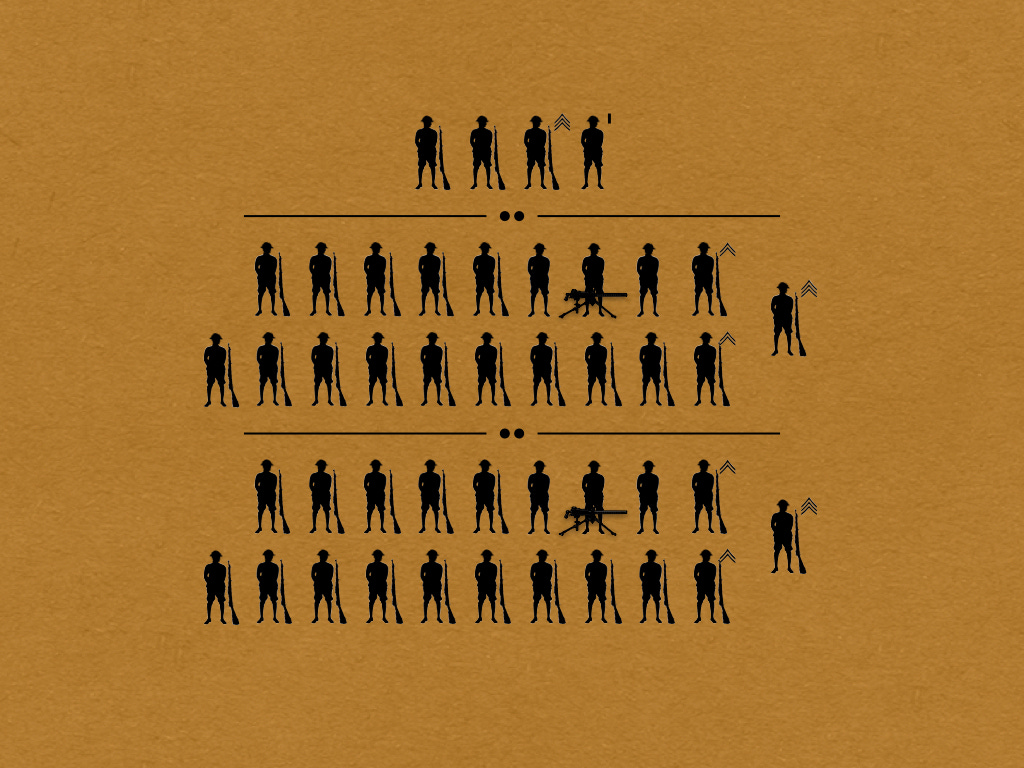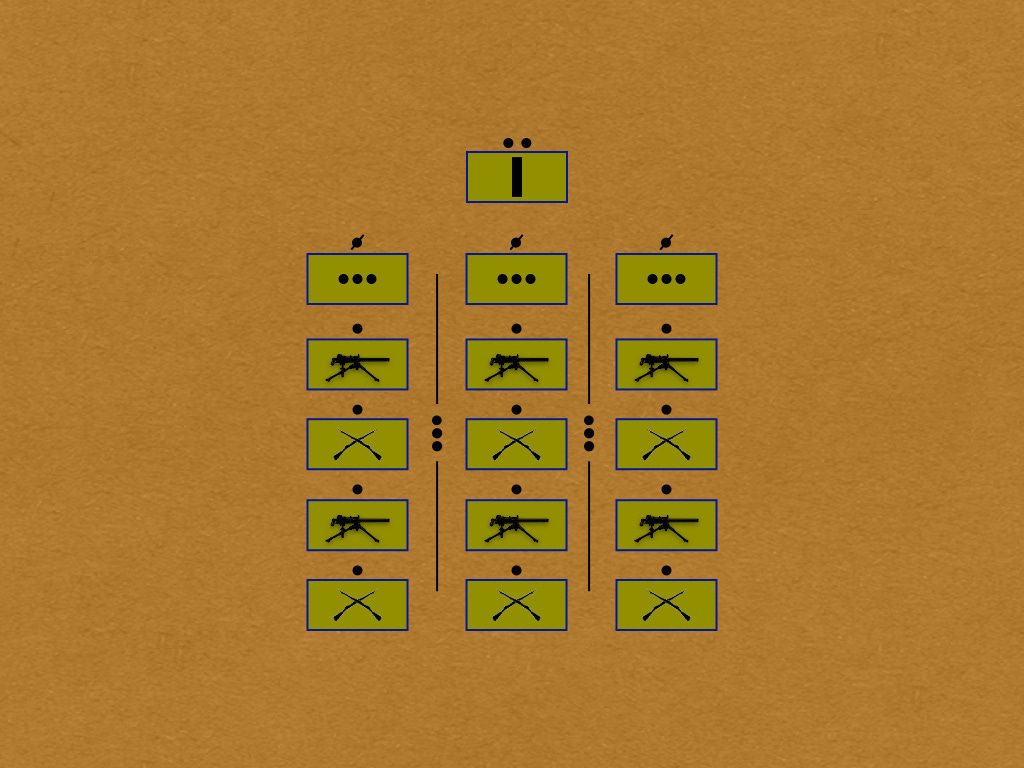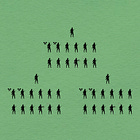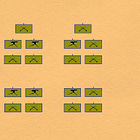In 1932, George Smith Patton, Jr., then serving, in the rank of major, as a student at the Army War College, wrote a 56-page paper that, among many other things, described an ideal rifle company. Designed to make full use of the peculiar virtues of a professional army, this company consisted of a small headquarters and three identical platoons. Each platoon, in turn, was made up of two two-squad sections, each of which was led by a sergeant.
Within each section, one squad rated a corporal and eight riflemen, all of whom were armed with “rifles of the latest type.” The second squad, with a corporal, four riflemen, and three machine gunners, employed an air-cooled, tripod-mounted .30-caliber machine gun. (Like some other American soldiers of the early 1930s, he describes this as a “light machine gun.”)
The rifle companies of the contemporary US Army and Marine Corps, whether actual or experimental, made extensive use of Browning Automatic Rifles. Major Patton, however, declined to include any weapons of that type in his ideal rifle company. Indeed, despite the length of his paper, he made no mention at all of automatic rifles.
The absence of automatic rifles may reflect an unspoken assumption that the “rifles of the latest type” would be semi-automatic weapons of the sort that would eventually evolve into the iconic M-1 Garand rifle. If this is the case, then Major Patton anticipated the argument, made by some US Army officers in the late 1930s, that the combination of the semi-automatic rifle and the “light machine gun” would deprive the Browning Automatic Rifle of the role it had previously played within rifle platoons and companies.
In the text of his paper, Major Patton declined to discuss the use of rifle grenades. However, in the table of organization appended to the work, he allocates four grenade dischargers to each rifle squad. These, I presume, were grenade-launching cups, of the type then being developed by the Ordnance Branch, that could be fitted to the muzzles of ordinary rifles.
The headquarters of Major Patton’s rifle company rated two officers, four non-commissioned officers, and eight privates. These were:
the captain who commanded the outfit
the lieutenant who served as the executive officer
the first sergeant (who, strange to say, carried a rifle)
two sergeants (who served, perhaps, as the mess sergeant and the motor sergeant)
a corporal (presumably the company clerk)
two cooks (who carried pistols rather than rifles)
two drivers (each of whom drove a one-and-a-half-ton truck)
two messengers
two spare riflemen
Source: George S. Patton, Jr The Probable Characteristics of the Next War and the Organization, Tactics, and Equipment Necessary to Meet Them (Washington, DC: Army War College, 1932)
For Further Reading:












I can't help but feel the then Maj. Patton knew Adolf von Schell, or at least his work. This reads a lot like the kind of light infantry formations von Schell was an advocate for while still managing to keep some of the character then traditional American formations had of being so light on officers
Interesting organization. It would certainly have a good deal of strategic and tactical mobility, as it is very lean, as well as good platoon level fire power. Note the lack of a third maneuver element (unless one of the two platoons provides a squad or section), a company weapons platoon with mortars and machine guns, anti-tank weapons, submachine guns, a supply sergeant or an armorer (unless one or more of the NCOs doubles up). One wonders what additional support was provided at battalion level and how many companies such a battalion would have in Patton’s idealized structure?